Features
1.Widely applied product with mature technology.
2.The main driving adopts high-precision gear drive, so that the output is improved by about 20% when compared with that of belt drive.
3.Imported high-quality bearing and oil seal are adopted to ensure efficient, stable and low-noise whole machine operation. The granulating room is equipped with air suction temperature-reducing system.
4.The feeder adopts variable-frequency and variable-speed motor to ensure the quality of discharged particles.
5.Ring dies with multiple kinds of bore diameters are optional, and high-quality craft ring dies are adopted, so that the service life is long, the discharged particles are smooth and the quality is high.
6.International advanced compensation type snakelike spring coupling has the properties of novel and compact structure, high safety, low noise and low fault rate.
7.Plus-size conditioner and jacket type conditioner are selectable to strength the particle conditioning effect.
Process flow introduction
The ruminant feed is characterized by coarse pulverization (screen size 4-8mm), low curing and quenching requirements (the granulator uses a single layer conditioner), and the finished granules are large in diameter (particle diameter is about 4-10mm). The two-line SZLH420 anti-feeding material is designed to produce 20-30T/H, using two crushing lines, one batching mixing line, two granulating lines and two packing lines. The total power of the equipment is about: 700KW; the construction area of the production area is about 21*17.5*28m; the 2T boiler is matched. The double-line SZLH420 produces 20-30T/H anti-twisting material. The whole line is compact in design, reasonable in structure, meets environmental protection requirements, and can be oriented according to customer requirements.
Process diagram
Production process of 20-30T/H anti-twisting material for two-line SZLH420: Raw material receiving and cleaning section, crushing section, batch mixing section, granulation section, packing section/bulk, auxiliary section.
Raw material receiving and cleaning section
The role of cleaning is to clean up impurities in the raw materials, such as large impurities, such as non-magnetic impurities such as ropes, clods, corn cobs and magnetic impurities such as iron nails, to ensure the quality of the products and the safety of subsequent processing equipment. When the double-line SZLH420 is produced, the 20-30T/H anti-tanning material is cleaned in the cleaning section and the powder material is cleaned.
Cleaning equipment: pellet sieve SCY100, designed to produce 30-40T/H;
powder sieve SQLZ90X80X110, designed to produce 30-50T/H.
Crushing section
Since the pulverization fineness requirement of the ruthenium feed is very thick, the two-line SZLH420 produces 20-30T/H anti-twisting material, and two small-power pulverizers are used in the pulverizing section, and four pulverized silos are arranged above the pulverizer. Before the raw materials are put into the warehouse, the magnetic separator is used to remove impurities to ensure the safe operation of the crusher. The impurity-removed material enters the pulverization chamber for pulverization. The pulverized material is then transported by a screw conveyor into a bucket elevator and introduced into the batching bin through the distributor. In addition to the screw conveyor, the pulverized material is equipped with an auxiliary suction system, which not only saves energy, but also prevents dust from overflowing, lowers the temperature of the material and improves the pulverization efficiency.
Crushing equipment (2 sets): pulverizer SFSP668*800, 90KW, designed to produce 10-15T/H.
Batch mixing section
Formulations are formulated according to the nutritional needs of different animals, using a specific device to accurately weigh the various raw materials. Mixing is an operation in which various feed ingredients are blended under external force to make them evenly distributed after being metered. The working section adopts two batching scales and 16 batching bins, of which the small materials are manually added with inspection scales. After the material ingredients are completed, they enter the mixer for mixing, and finally the material is output through the scraper and lifting.
Weighing equipment: batching scale PCS20/PCS10, batching accuracy ≤ 3‰.
Mixing equipment: Mixer SHSJ4, 30KW, 2000kg/P, designed to produce 24-30T/H. The mixing uniformity CV ≤ 5%.
Granulation section The purpose of granulation is to make finely divided, dust-prone, poorly palatable and difficult-to-ship feeds into pellets by the action of heat, moisture and pressure in the granulation process to improve the palatability of the feed and reduce the feed. Reduce feed waste and reduce environmental pollution. The two-line SZLH420 produces 20-30T/H anti-twisting material. Two single-layer quenching and granulating machines are used in the granulation section, and four granules to be granulated are arranged above the granulator. After the granulation, two coolers are respectively added (since the ruminant feed has no broken material, the crusher is not included in the section), and then the sifting sieve is used for screening, the finished product is put into the packing bin, and the rest is returned to granulation or bagging.
Granulation equipment: SZLH420, 110KW, designed to produce 8-15T/H.
Cooling equipment: SKLN6, 1.1+1.5KW, 6m3 volume, designed to produce 10-15T/H.
Packing section The pellets or powders in the finished product warehouse are packaged by an electronic automatic baler, and the finished products that are not packaged are transported away by the bulk carrier.
Packing equipment: belt scale, packing range 20-50kg/bag, 6-8 packs/min.
Auxiliary work section Double-line SZLH420 produces 20-30T/H anti-dusting dust removal system, dust removal at the packing port to improve the working environment of workers; grease addition system, common mixer to add, improve feed palatability; add molasses, suitable for ruminants, Set the manual feeding port, and add 3% to configure the molasses addition system.br />








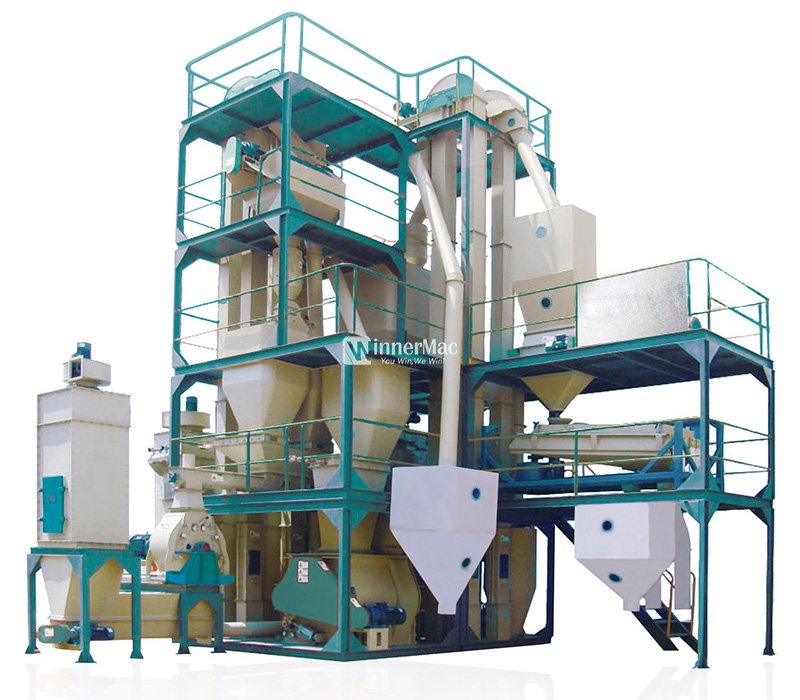
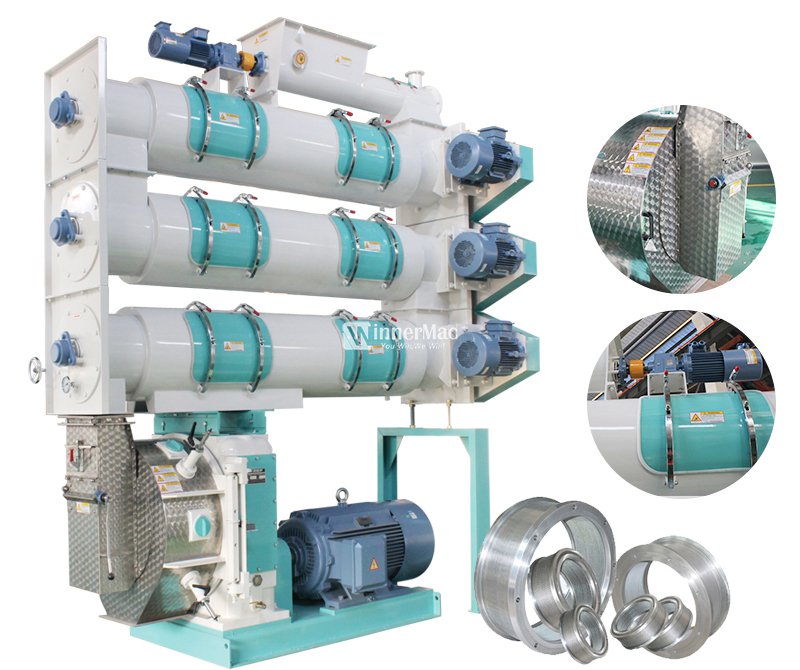
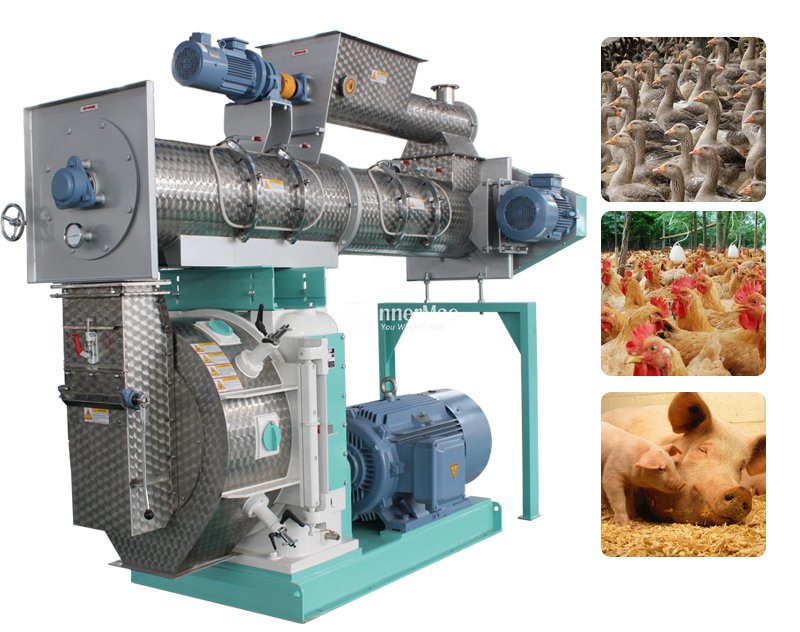
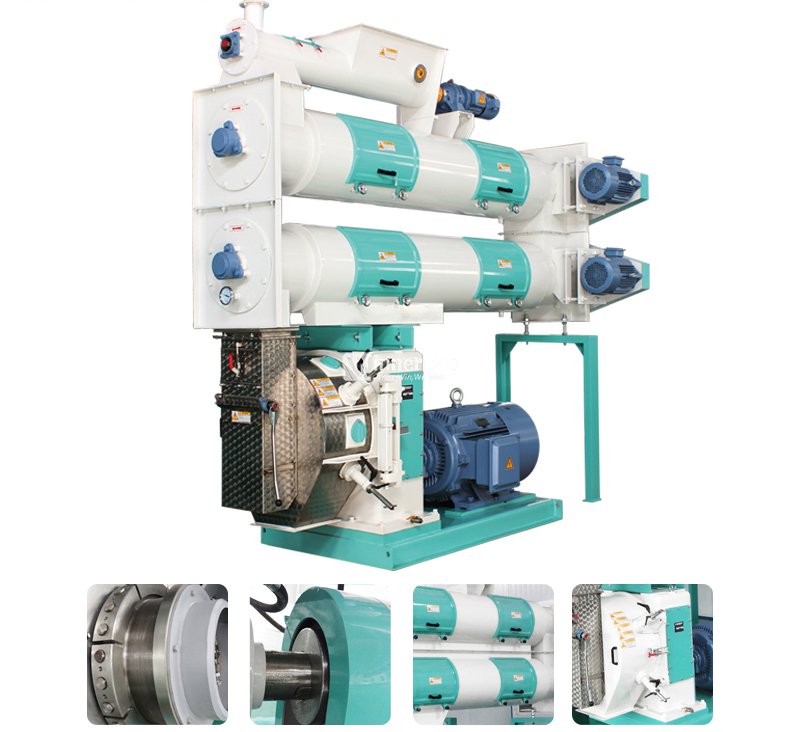
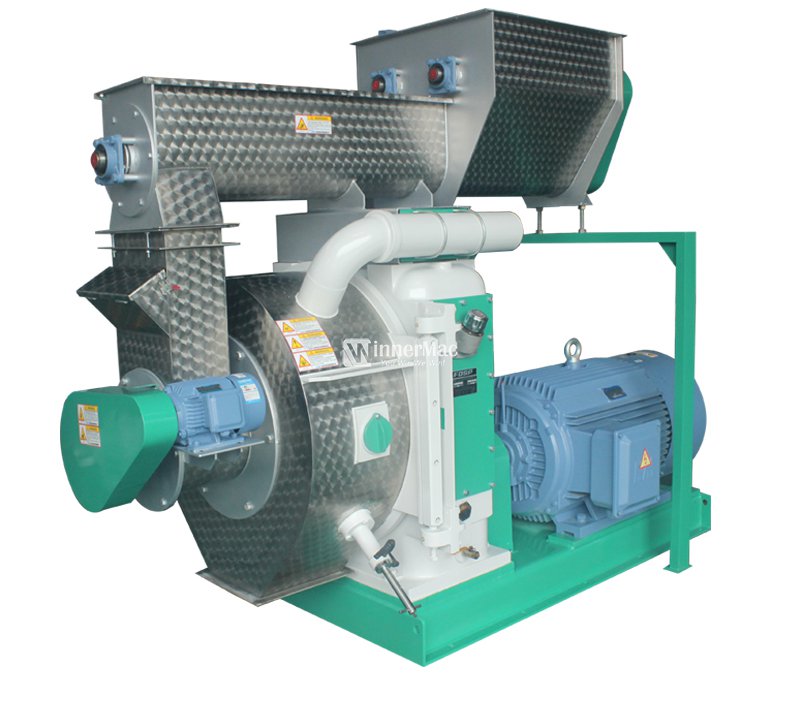 ring die wood pe
ring die wood pe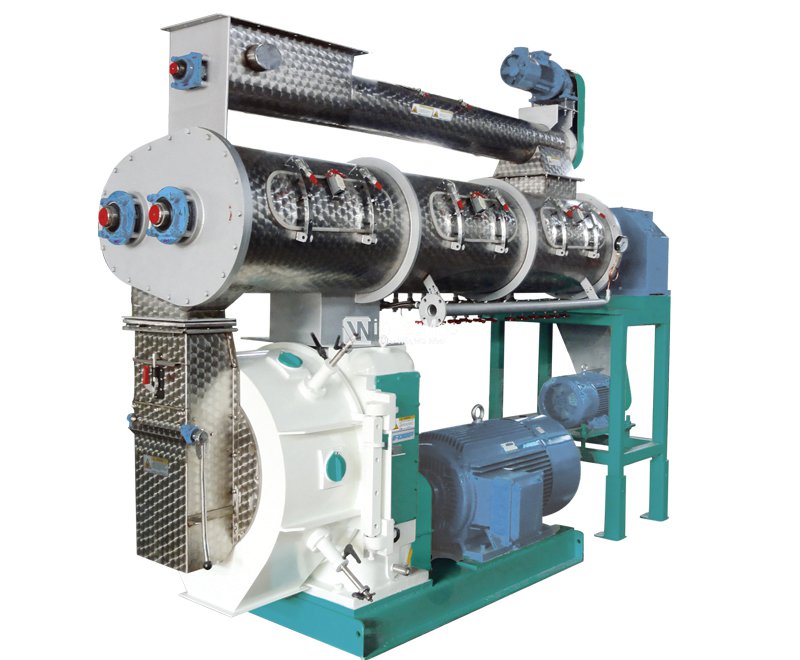 livestock feed p
livestock feed p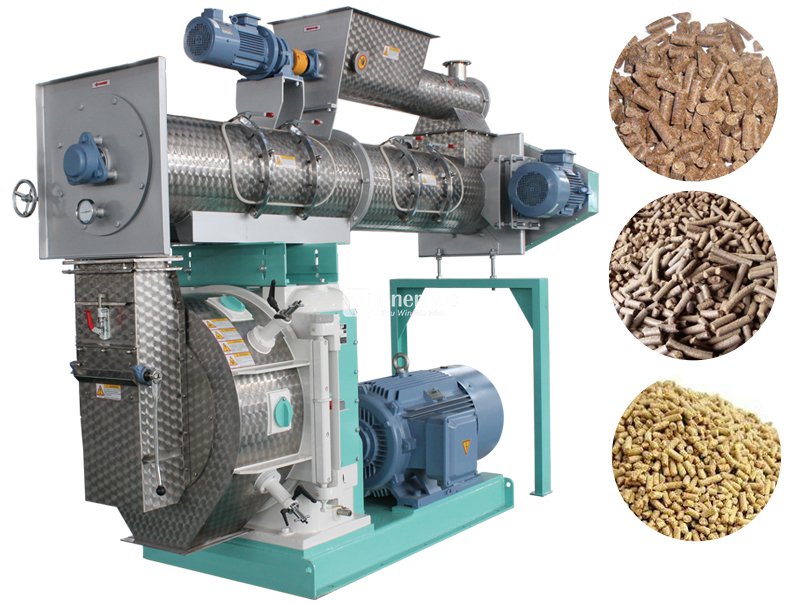 1-30TPH poultry
1-30TPH poultry 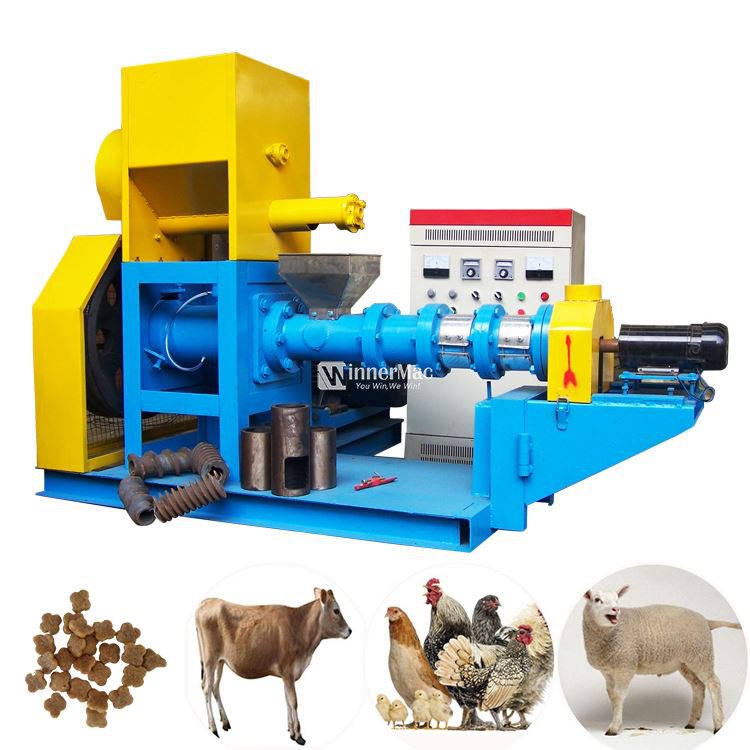 cheap price and
cheap price and 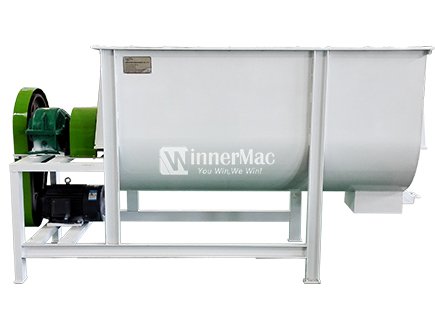 Horizontal Mixer
Horizontal Mixer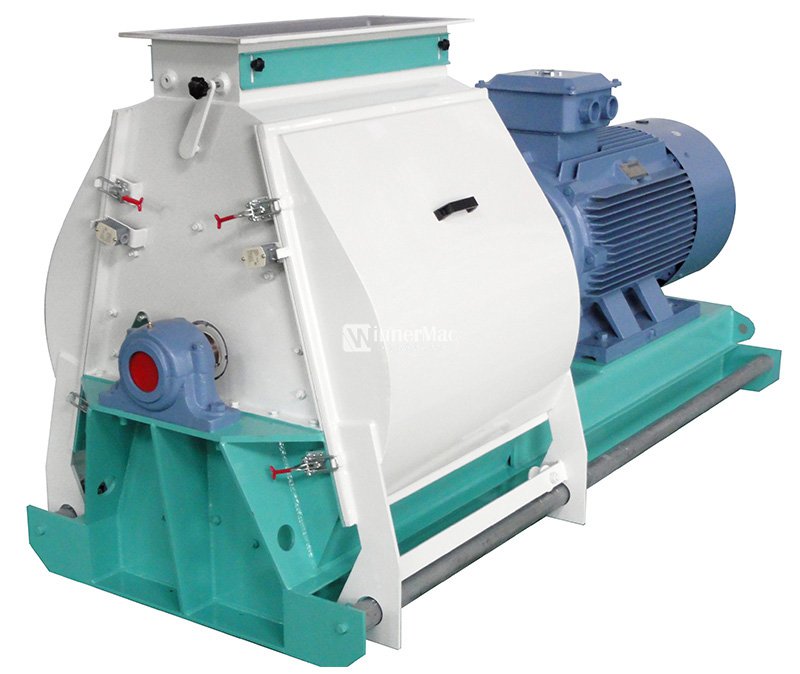 Hammer Mill,Whea
Hammer Mill,Whea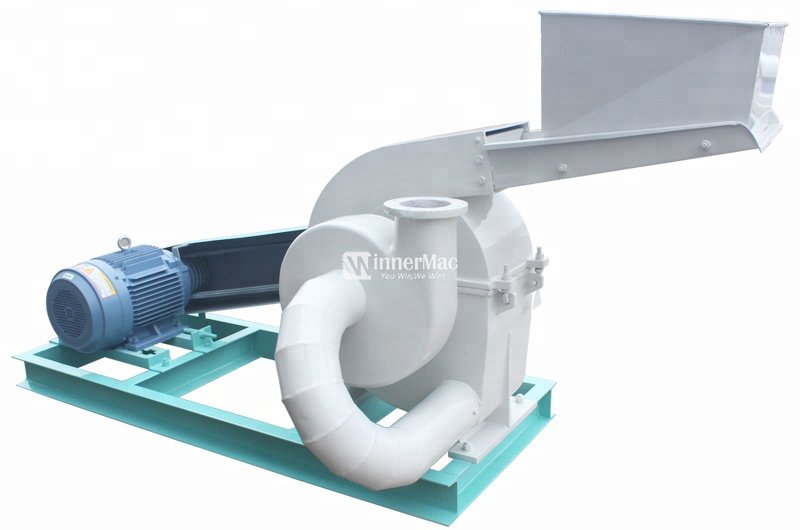 Straw hammer mil
Straw hammer mil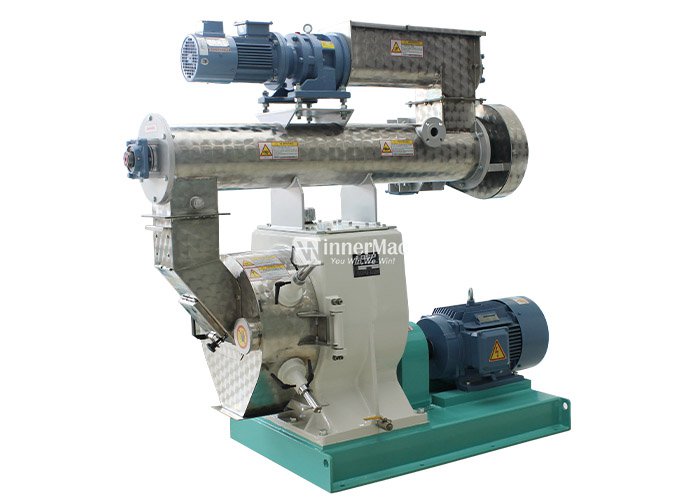 Alfalfa Feed Pe
Alfalfa Feed Pe